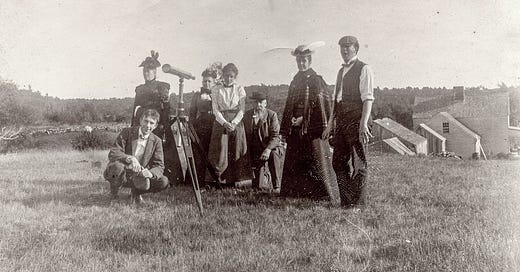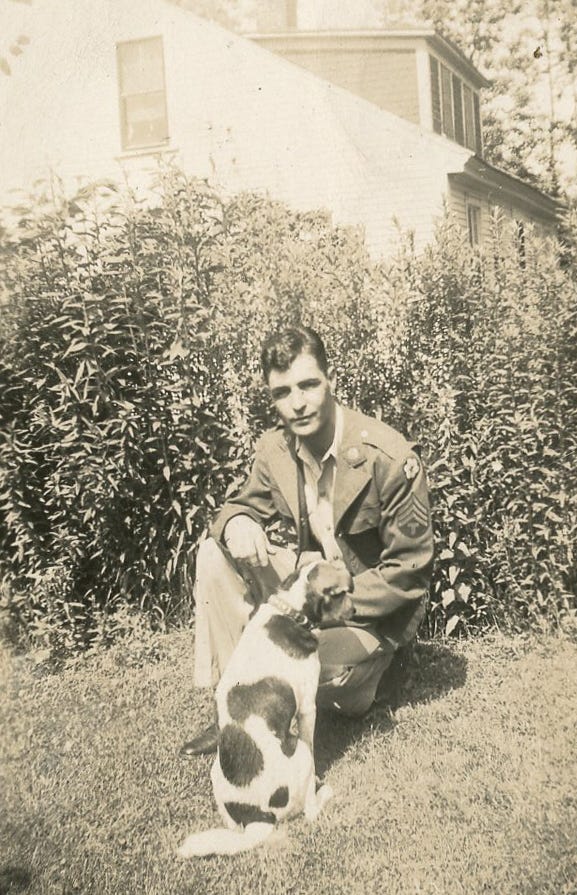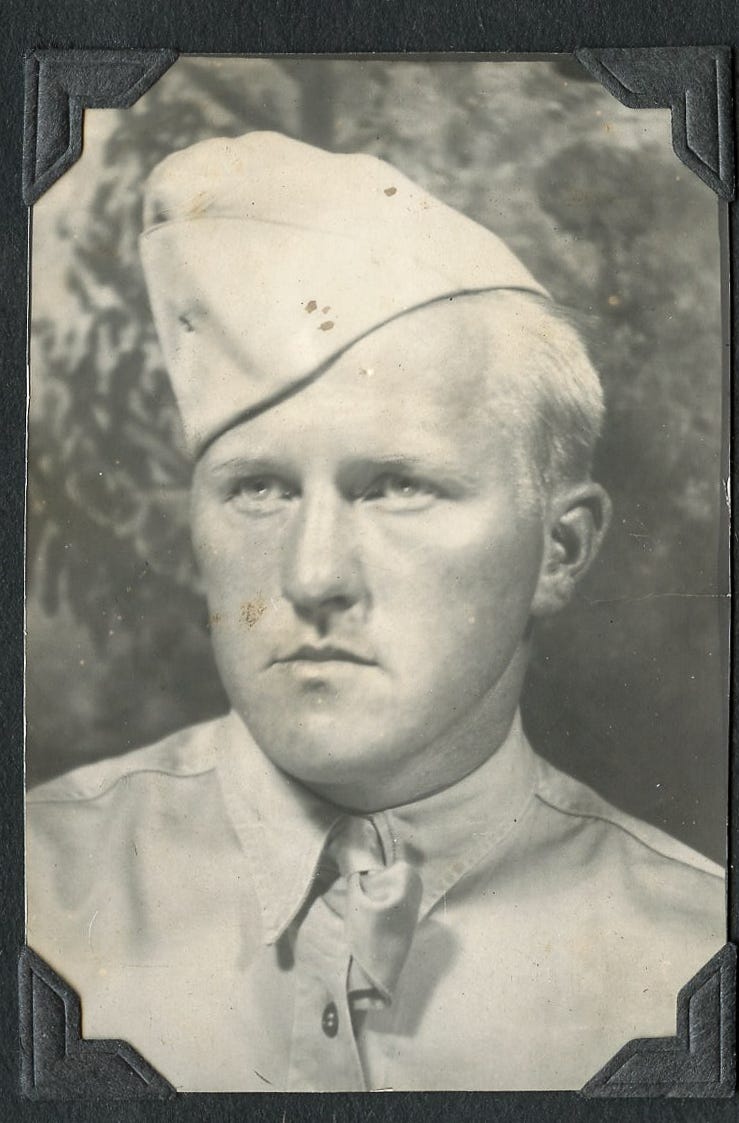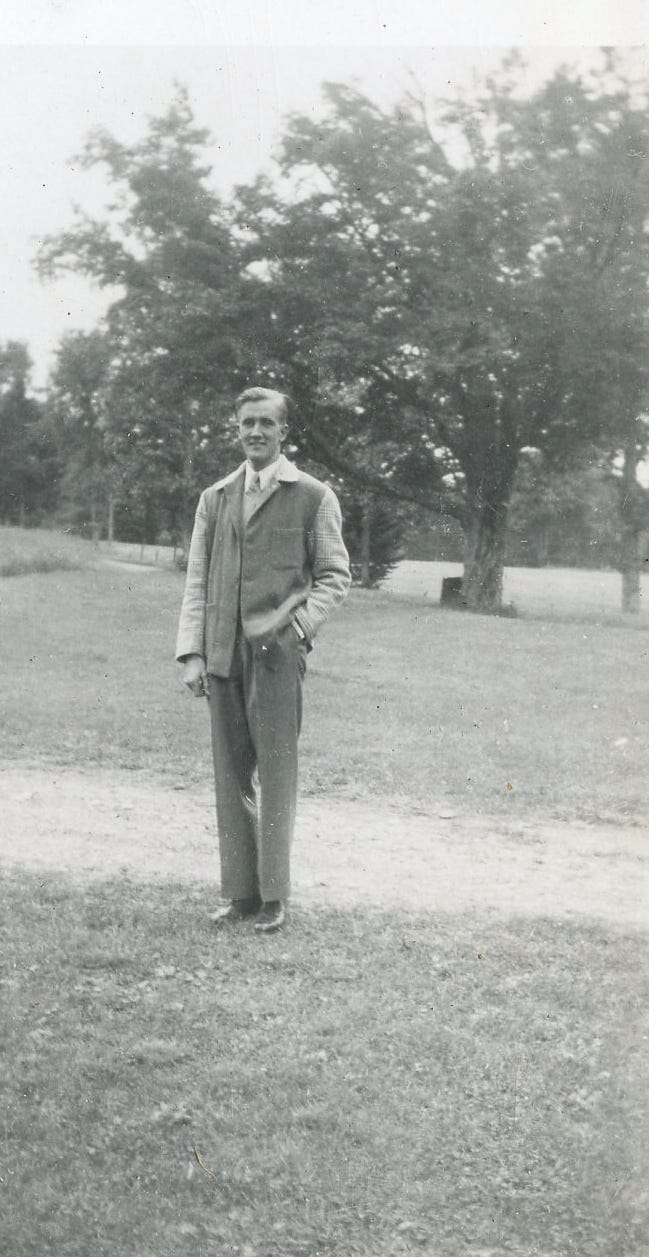WWII Veterans
Hazel Moore compiled an album of New Ipswich WWII veterans for the New Ipswich Historical Society. As a prelude to our town’s Memorial Day celebration, we will feature a few photos each day.
On this day - April 11, 1908
James Roger diary entry
11th April 1908 (Saturday)
Cold with high West to NW winds. David at Greenville for flour, hay &c. I swept church in afternoon. David went for load of sand for hen houses &c. F. Cushing brought his eggs for incubation. Got telephone from Hamish that Jim had arrived there and would be home on Sunday.
On this day - April 11, 1897
William Jurian Kaula diary entry (tales of an artist abroad)
11 Apr 1897
I saw Hazard* and he has really enjoyed being out of the Latin Quarter and found his "pension" a most enjoyable place among the old maids and their gossip.
I took my first voyage on a steamboat on the Seine. There were races at the courses at the Bois de Boulogne and the boat was crowded. The sun shone brightly and I had an excellent opportunity to see much of the city going down the river. There is very much about the Seine that I have not yet mentioned and is worthy of description. We embarked at the Louvre near the Pont du Carousel which is my favorite bridge and the one that I generally cross on my journeys across the river. One must pass or linger on the Quai Voltaire where the walls are loaded with cases and boxes of second-hand books, prints, pamphlets, posters, and postage stamps.
I am nearly always tempted to stop and examine this apparent collection of rubbish and it is perfectly amazing to note the great variety in stock by the vendors.
Starting from the heart of the city with the Louvre on one side and the Palais de l'Institut on the other there is a charming view looking backward toward the Ile de la Cité which I will have to leave until I make a voyage in that direction. The first object of historical interest is the ruins of the Palais du Quai d'Orsay, a huge building that was burned by the Communards in 1871. The trees are now in full verdure inside of the black grimed walls. Now comes the Place de la Concorde but it is much concealed by the high river walls, there is but a glimpse of the shaft of the obelisk, the Madelaine, and the heights of Montmartre behind. On the other side of the river rises the dome of the Chambré des Députés. Now we are near the Palais de l'Industry with its great glass roofs now sheltering the coming exhibition of the Salon de Champs Elyseés. Preparations are now in progress for the construction of a new bridge across the river to be used at the next world's fair. Owing the recent display of affection between France and Russia this bridge will be named Alexander. The same individual laid the corner-stone during his recent visit to Paris. The open space of the Esplanade de Invalides which is visible at this point affords a view of the gilded dome of the Hôtel des Invalides which covers the tomb of Napoleon I like a huge Prussian helmet with its glittering spike that sparkles in the sun. After passing under many bridges we approach the exposition grounds with its great buildings and domes of the fair held in 1889. Right in the midst of these grounds and buildings rises the stupendous Eiffel Tower - naturally (says the guide book) the most conspicuous object in view. We look upon this colossal iron framework with awe which has appealed to us by being the most familiar object that attracts the eye in Paris. The tower rises from the ground and arches up to the first platform which is 190 feet above the ground. The various platforms contain restaurants, cafes, buffets, and a theatre. It is open to the public and I shall ascend to the top some day and be able to tell more about it. On the other bank of the river directly opposite on the hillside is the Trocadero. It is a very imposing building in the Oriental style and is named after one of the forts of Cadiz. It contains a Museé de Sculpture Comparie or des Moulages, and an Ethnographical** Museum. The views from the balconies extends for miles up and down the Seine and overlooks the Exposition grounds of 1889. It is built in the form of a crescent with two tall square towers at the main portion of the building in the centre. The two wings are curved and are very long, some 220 yards in length. The front of the central portion is very elaborate and from which descends a great cascade into a large basin. Zola's descriptions of sunsets as seen from the balconies here are very vivid with all the details of the effect as if seen by the eye of the painter. The city of Paris beyond this point in the river is much less interesting. There is the Statue of Liberty on an island in the middle of the river. It is a small reproduction of the one in New York harbor by Bartholdi. As a work of art it is a sad failure and resembles a woman on the point of retiring holding aloft a candle. I was told that this was presented to France by the French citizens of New York. The Pont du Jour is the last and if not the most imposing of the bridges across the Seine. Over the bridge on higher arches runs the viaduct of the circular railway that makes a belt around the city inside of the walls. The banks here are lined with cheap restaurants, cafes, concerts, and bicycle resorts. Beyond is open country with the background of the hills of Mendon and St. Cloud. The boat stops at many piers where there are pleasant little villas. The most important stop is that of Sevres which is celebrated by the government since the last century (1756). Mendon, Serves, and St. Cloud are very interesting places and must be left for other excursions. We are now at the terminus of the steamboat at Suresnes. Opposite lies the Bris du Boulonge with the courses of Longchamp and the races in progress. There are hundreds of cabs and thousands of bicycles. Suresnes is a small town and the few cafes are resorts of the multitude of bicyclists who stop for refreshments. The trip on the steamer from Paris takes about an hour.
* Arthur M. Hazard - b. 1872, d. 1930, a close friend, fellow artist and travel companion of William Kaula.
** I am greatly indebted to "Dicky" Wyeth for this elegant name. (unknown if related to the subsequent Wyeth painters).
[diary transcription by Kim Black for the NIHS 4/9/2022]







The differences between John Rogers daily diary and William Kaula’s descriptive trip down the Seine really show how the mind is most enlightened by travel. Going to Greenville to get hay loses its appeal after reading Kaula’s piece.